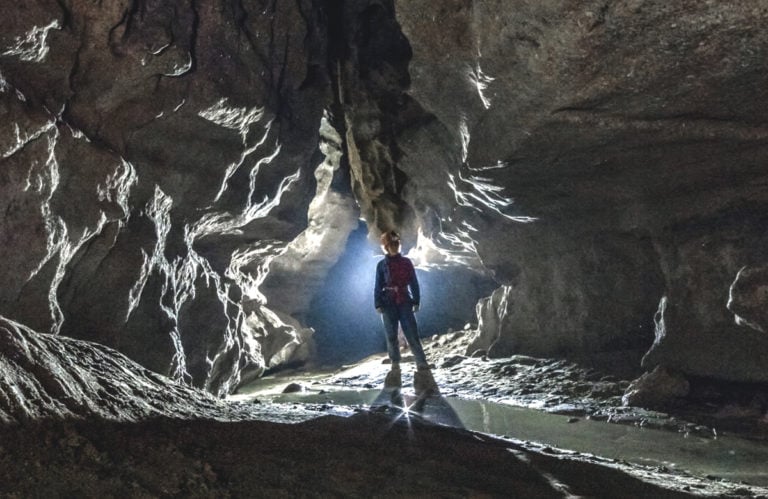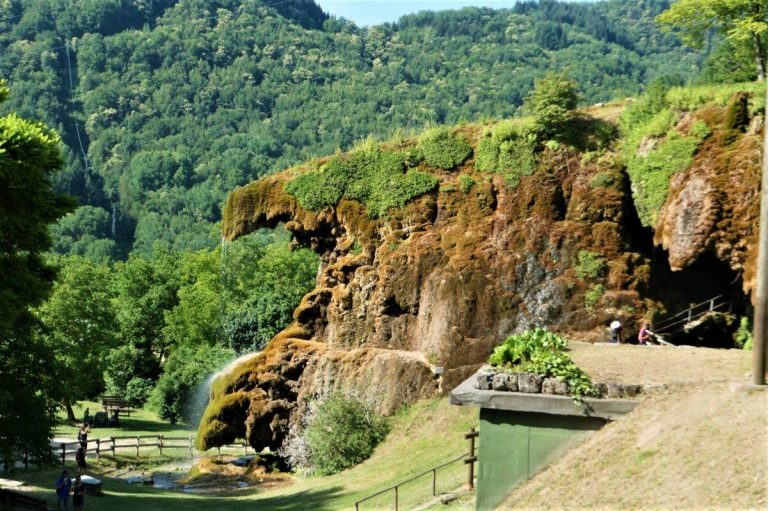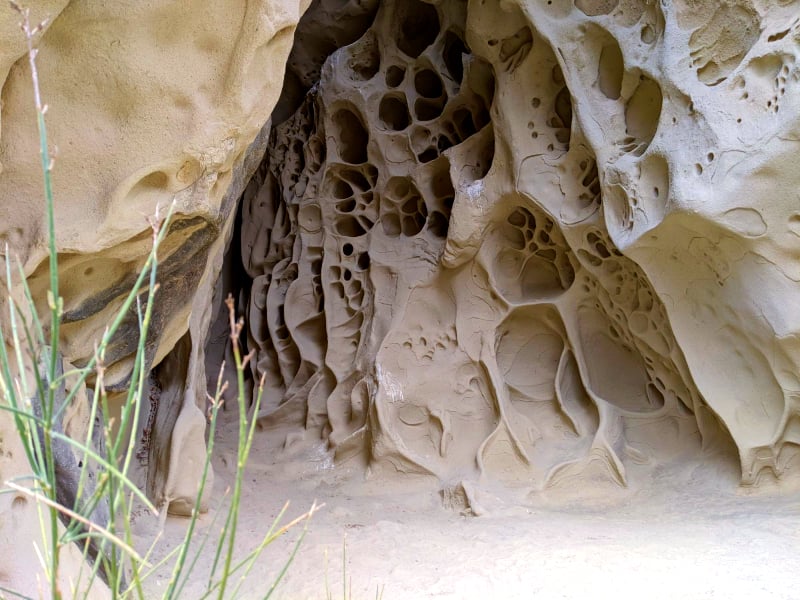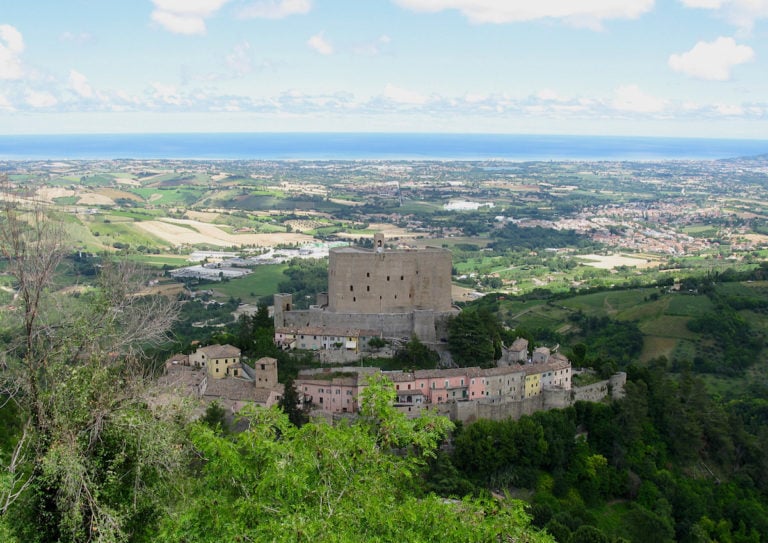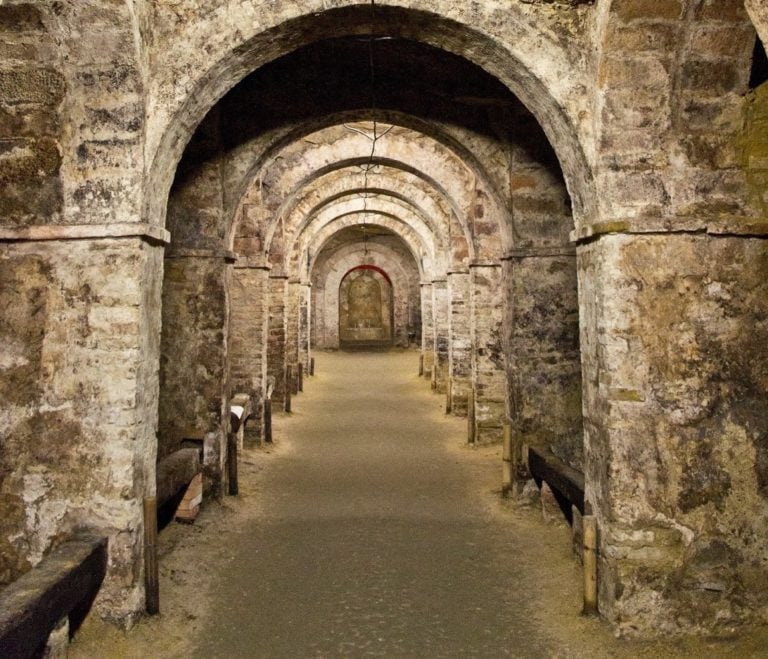Few places like caves have always attracted and inspired the imagination of humans, who has used them as dwellings, shelters or even places of worship.
In the past, people rarely ventured into the heart of the mountains, beyond the reach of light, where mystery, fear and superstition reigned supreme. Today, it is curiosity, the thrill of exploration and the wonder of what we find before our eyes that drive us to experience the underground world more deeply: an extreme and timeless place that awakens strong emotions and makes us feel like children, but with our lives in our hands.
Even a semi-tourist cave such as the Onferno Nature Reserve in the province of Rimini allows us to experience these emotions and enter an unknown world full of fascinating mysteries.
Beneath the surface, the dimensions of space and time are lost. The surprising depth of the absolute darkness, the sound of the river accompanying us, the colourful concretions, the gypsum crystals shining in many fragile and imaginative shapes, the drops that interrupt and enhance the delicate silence that envelops us.
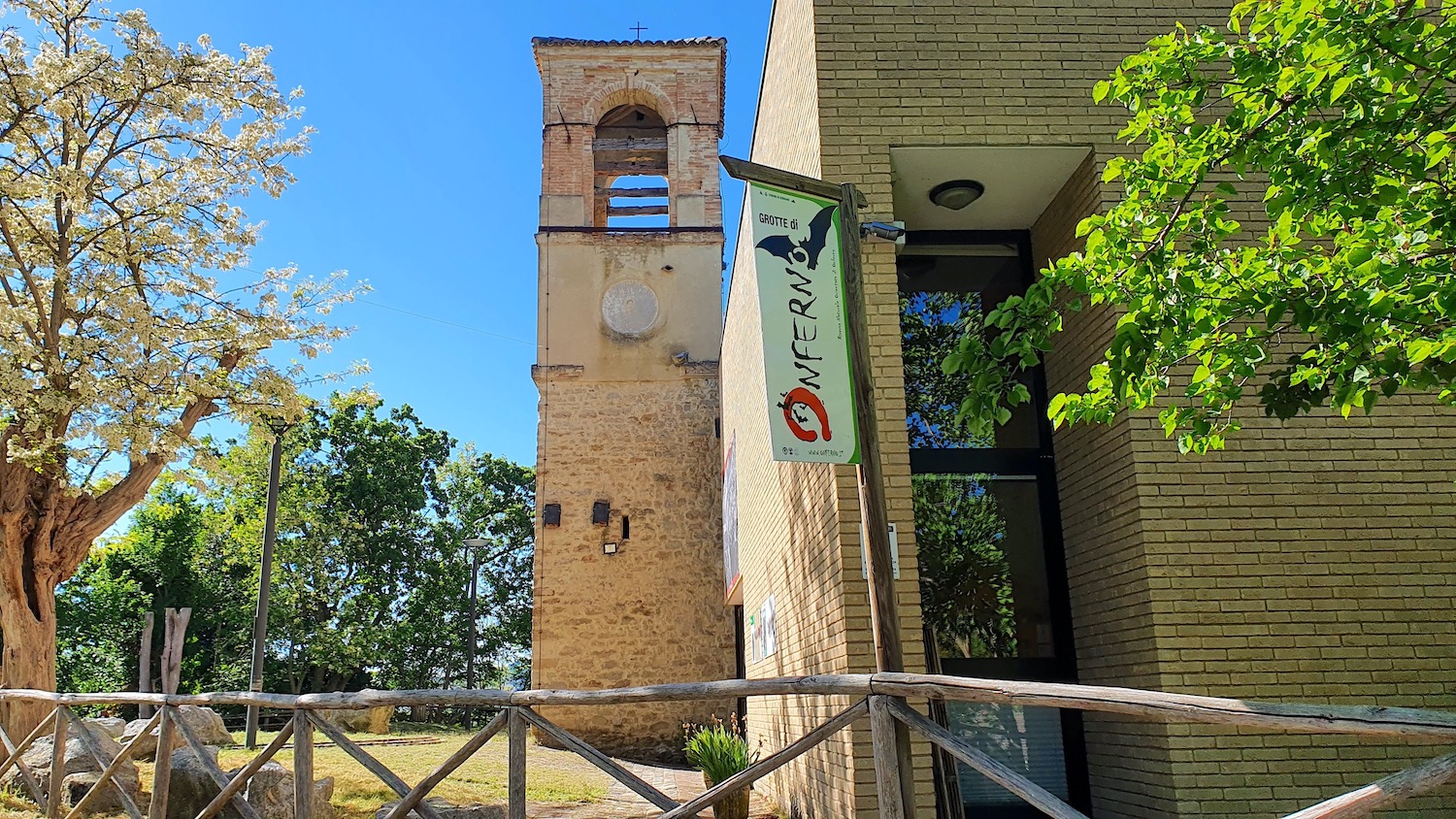
The caves
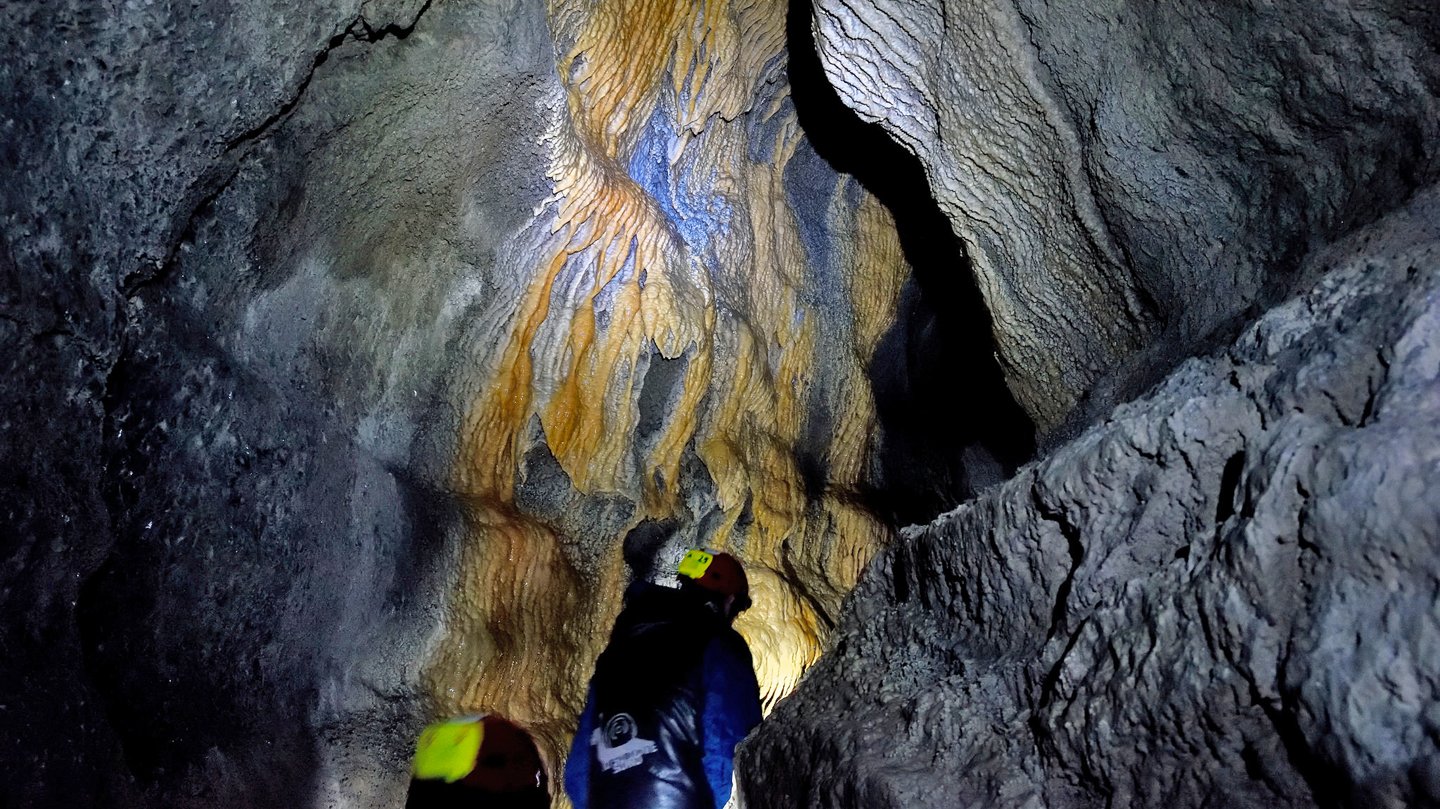
The original name of these caves was ‘Inferno’ (Hell) because of the vapours that emerge from the highest openings of the cave in winter.
This is a karst complex of considerable naturalistic value, scientifically documented by speleologist Ludovico Quarina in 1916, which is home to one of the largest and most varied colonies of bats in Italy.
The Onferno Caves – declared a UNESCO World Heritage Site on 19 September 2023 along with six other sites in the Northern Apennines – were carved out by an underground stream that cut through an isolated chalk cliff, opening up tunnels, chambers and ravines that extend underground for over 1 km.
Today, an easy and spectacular 400-metre route is open to visitors of all ages, featuring high, winding underground corridors marked by the watercourse through large rooms and ceilings with unusual formations known as “mammelloni”.
As mentioned, numerous bats live along the meanders or hang from the vaults. They should not be disturbed, but you can learn all their secrets. A visit to Onferno is also the perfect opportunity to dispel some common misconceptions about these special little creatures: they are not blind, they do not stick to your hair, and each one eats “only” thousands of insects every night!
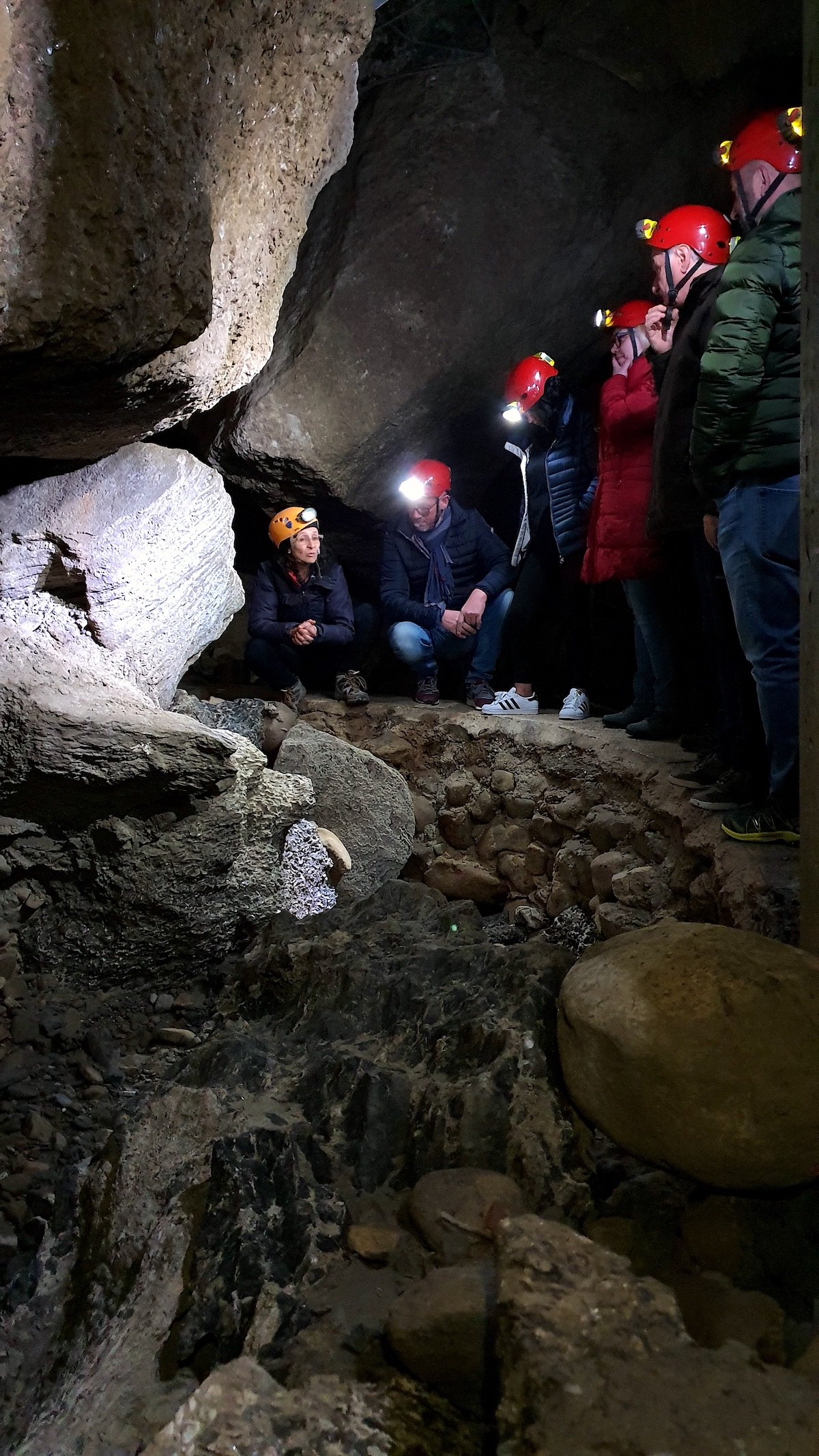
To access the cave, you descend a path through the woods, in a wild and protected environment that connects water, rock, fauna and splendid vegetation.
The visit lasts about 90 minutes, during which – wearing caving helmets provided by the Visitor Centre – you will be accompanied by a specialised guide. It is not by chance that this is the most important tourist cave in Emilia-Romagna.
It is advisable to wear comfortable shoes with treaded soles to avoid slipping in the dampest areas or in the woods, and a sweatshirt or light jacket even in summer. The internal temperature is around 12-14 degrees all year round, so even if you descend into “hell”, you will stay cool even in summer!
The nature reserve
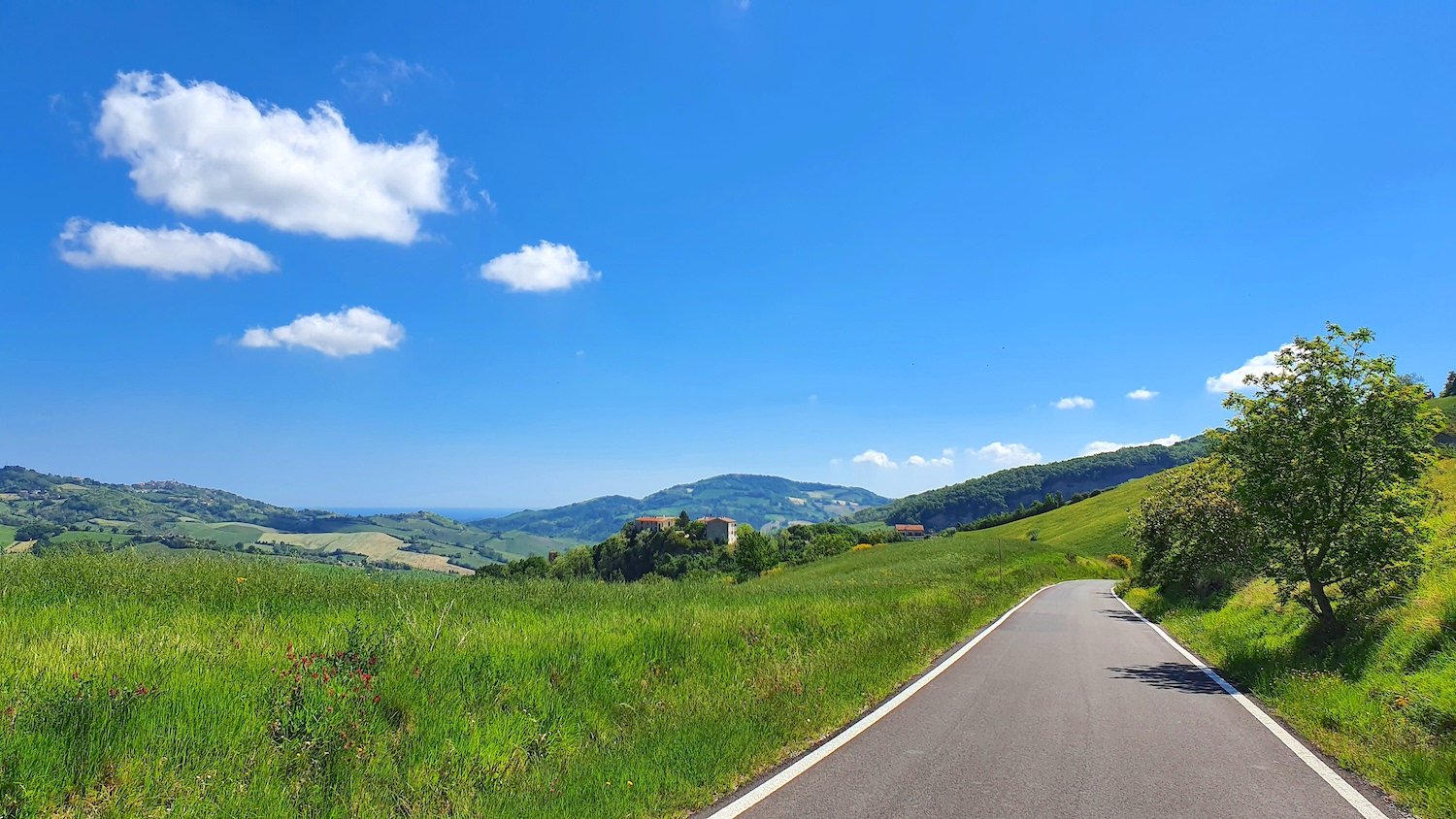
Above the chalk cliff overlooking the caves lies the village of Onferno, or “Castrum Inferni” as it appears in the first historical records dating back to 1231. Once a rural castle, it has now been restored with a few houses, a hostel and an inn.
The view from the small square is breathtaking and healing for the soul, with San Marino in the background of the Valle del Conca, Sassofeltrio perched in the foreground, and the sea to the east.
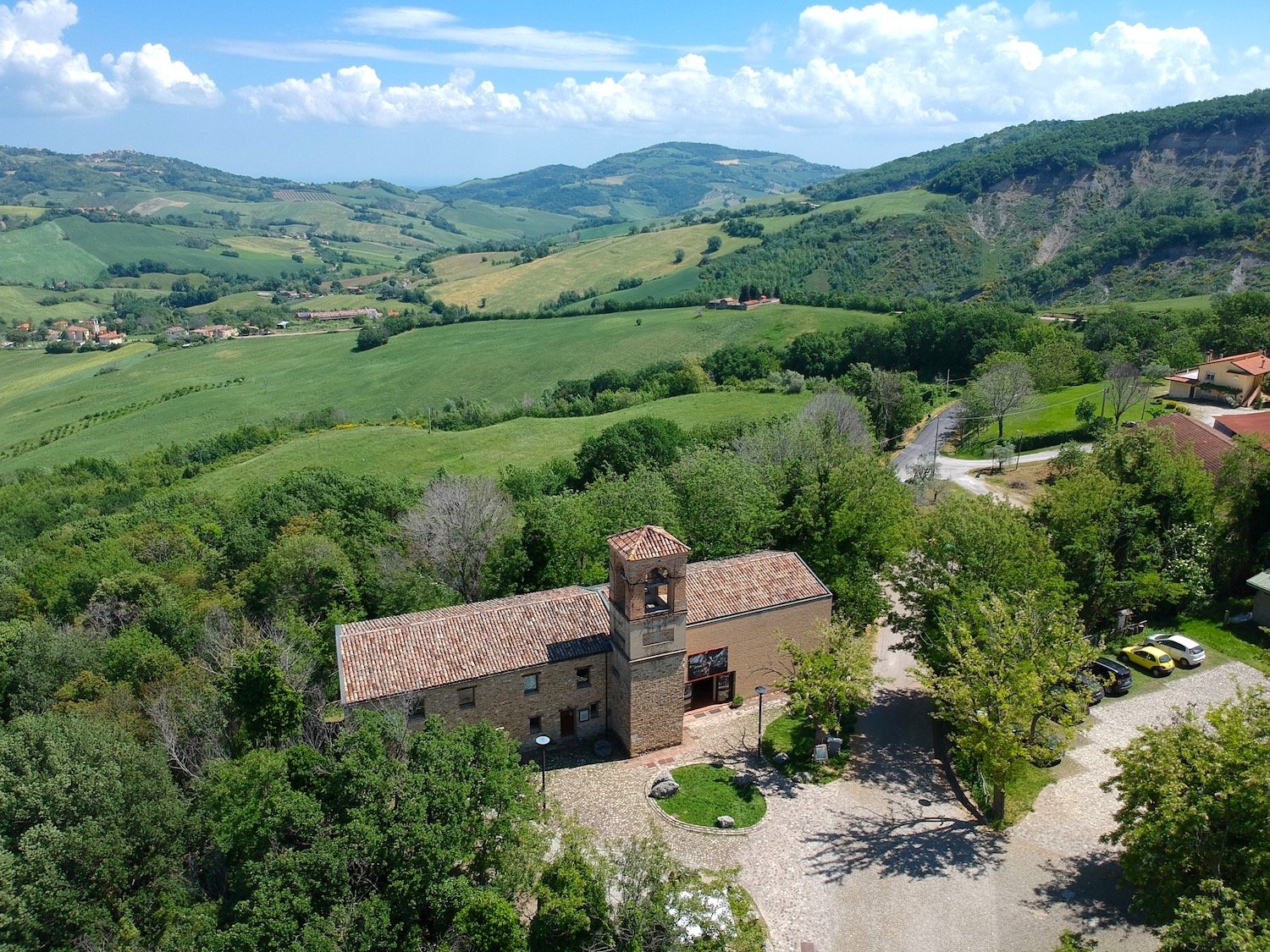
273 hectares in the hilly area of Rimini, protected for their undoubted naturalistic value, given by the presence of dense and rich vegetation, fauna with rare wild animals, and a particular geology characterised by sinkholes, swallow holes, cliffs and gullies and, of course, caves.
A beautiful and varied area which, with a little care, allows for excursions and surprising natural and landscape observations, facilitated by well-maintained signage.
Among the main itineraries, of varying length and difficulty but all equally beautiful, are the Ripa della Morte, the Via dei Crinali and the Sentiero Natura, as well as the Sentiero della Memoria, which crosses the places where the Gothic Line passed, in the municipality of Gemmano.
The Visitor Centre, the Nature Museum and the Multimedia Museum
The Nature Museum is housed in the ancient Pieve di Santa Colomba, one of the first churches in the Rimini area, which was partially destroyed during the Second World War and has now been completely renovated.
It is a museum with exhibition and educational purposes, illustrating the natural features of the Nature Reserve in terms of vegetation, fauna, geology and speleology.
The parish church also houses the Visitor Centre, a reference point for educational activities with schools, but also for exciting excursions into the caves and the Reserve – and there is also an interesting wild garden next door.
Finally, there is the Multimedia Museum, which serves as a multifunctional space for conferences, training courses and screenings. Inside, there is also a tourist information office and a small bar.
Bat-Night
In summer, after sunset, the caves open once again for a new journey immersed in the magic of the night and to discover its protagonists.
The ‘Bat Night’ tours are dedicated especially to bats: unique mammals that have evolved to great success and have learned to move through the air with real acrobatic manoeuvres.
Millions of years before humans, bats began to use radar, which allows them to move at night without hitting obstacles, guiding themselves with echoes, or rather with their ears, listening to the reflected echoes. All this helps us understand the wonder and genius of these small winged mammals.
The evening visit allows us to see them as they go out hunting, but also to discover why they hang upside down. Leaving the cave at night, between the woods and the stars, is an experience you will remember for a long time.
More info:
Onferno Caves
📍 Via Provinciale Onferno, 50 – Gemmano (RN)
📞 +39 389 199 1683
📧 onferno@nottola.org
Author
You may also like
Journey to the Center of the Earth: Emilia-Romagna’s caves you cannot miss
by Davide Marino /// January 31, 2017
The Caves of Soprasasso, Marvel of the Bolognese Apennines
by Maria Grazia Masotti /// April 3, 2024

Interested in our newsletter?
Every first of the month, an email (in Italian) with selected contents and upcoming events.
Mysteries and legends of Rimini and surroundings
by Elisa Mazzini /// September 21, 2018
10 places to amaze children #inEmiliaRomagna
by Elisa Mazzini /// April 6, 2018

